In this fascinating article, you will uncover the identities of the top 5 supreme gods in Hinduism. Exploring the rich tapestry of Hindu theology, you will discover the deities that hold the highest status within this ancient religion. Delving into their significance and roles, this article presents a captivating glimpse into the divine pantheon of Hinduism. Whether you are a Hindu devotee or simply curious about world religions, join us as we embark on a journey to uncover the top 5 supreme gods in Hinduism.
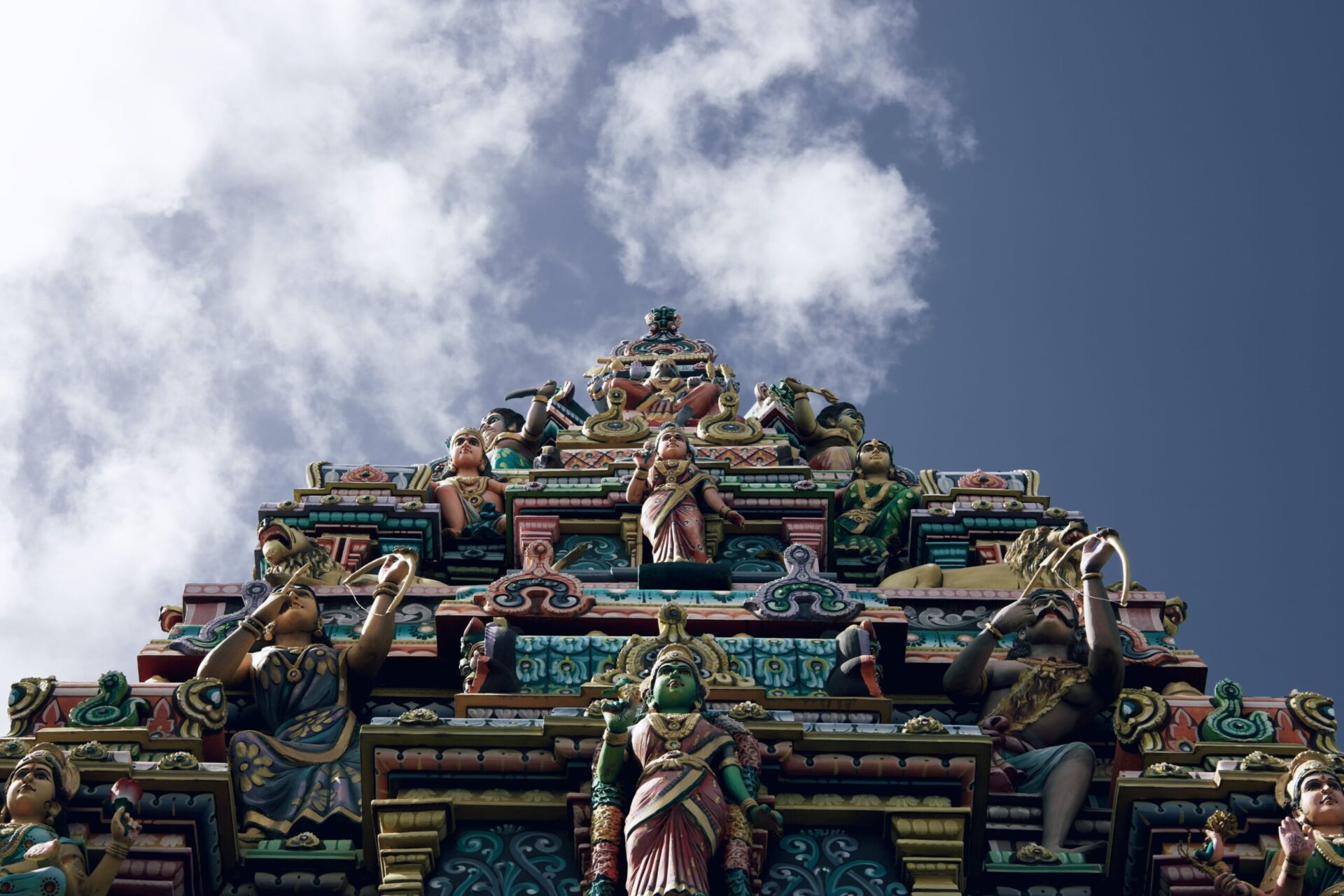
Table of Contents
Brahma
Origin and Role
Brahma is one of the three major gods in Hinduism, along with Vishnu and Shiva. He is considered the creator of the universe and is often referred to as the Supreme Being. According to Hindu mythology, Brahma emerged from a golden egg known as Hiranyagarbha. He is believed to have created the world and all living beings, including humans, animals, and creatures of the spiritual realm. Brahma’s role is to maintain order and harmony in the universe, ensuring that everything functions according to the divine plan.
Appearance and Symbolism
Brahma is usually depicted with four heads, each facing a different direction, symbolizing his all-encompassing knowledge and wisdom. He is often portrayed with four arms, holding a book of knowledge called the Vedas, a scepter called the Kamandalu, a rosary, and a lotus flower. The lotus flower is particularly significant, representing purity and spiritual enlightenment. Brahma is also associated with the color white, which signifies purity and knowledge.
Worship and Significance
Although Brahma is one of the supreme gods in Hinduism, he is not widely worshipped compared to Vishnu and Shiva. There are very few temples dedicated to Brahma, and his worship is mainly carried out in private rituals and ceremonies. However, he is still revered and respected for his role as the creator of the universe. Devotees seek his blessings for knowledge, creativity, and harmony in their lives. Brahma teaches us the importance of order, balance, and the pursuit of knowledge.
Vishnu
Origin and Role
Vishnu is one of the supreme gods in Hinduism, responsible for the preservation and maintenance of the universe. According to Hindu mythology, Vishnu is considered the preserver and protector of the world. He is believed to have incarnated on Earth several times to rid it of evil and restore righteousness. Some of his most famous incarnations include Lord Rama, Lord Krishna, and Lord Vishnu himself.
Appearance and Symbolism
Vishnu is depicted with a dark complexion and is often portrayed with four arms, holding his divine symbols, which include a conch shell (shankha), a discus (chakra), a mace (gada), and a lotus flower. He is typically shown wearing a crown and adorned with jewelry, symbolizing his regal and divine nature. Vishnu is associated with the color blue, which represents his infinite cosmic power and divine energy.
Worship and Significance
Vishnu is widely worshiped and revered by millions of devotees around the world. His worship is carried out in temples, homes, and during special festivals and ceremonies. Many Hindu scriptures, such as the Vishnu Sahasranama, are dedicated solely to praising his various incarnations and qualities. Devotees believe that by worshiping Vishnu, they can seek his blessings for protection, prosperity, and spiritual growth. Vishnu teaches us the importance of maintaining harmony and righteousness in our lives.
Shiva
Origin and Role
Shiva, also known as Mahadeva or the Great God, is one of the most revered gods in Hinduism. He is often referred to as the destroyer, as his role is to dissolve and transform the universe in order to recreate it. Shiva is believed to exist eternally, beyond the cycle of creation and destruction. He is associated with the concept of ultimate reality, known as Brahman, and is considered the embodiment of cosmic consciousness.
Appearance and Symbolism
Shiva is commonly depicted as a deity with a blue complexion, representing his infinite and transcendental nature. He is often shown with matted hair piled atop his head, which symbolizes his abandonment of worldly attachments. Shiva is known for carrying a trident (trishula), which represents the three aspects of consciousness – waking, dreaming, and deep sleep. He is also depicted with a crescent moon on his forehead, a third eye in the middle of his forehead, and a snake coiled around his neck.
Worship and Significance
Shiva is worshiped by millions of devotees around the world, particularly in India. His worship is characterized by various rituals, such as offering flowers, milk, and water to his symbols and idols. Devotees seek his blessings for spiritual enlightenment, inner peace, and liberation from the cycle of birth and death. Shiva is often depicted as an ascetic, representing the renunciation of worldly desires and attachment. He teaches us the importance of embracing change, overcoming obstacles, and finding inner peace amidst life’s challenges.
Devi
Origin and Role
Devi, also known as Shakti or the Divine Feminine, is the female counterpart and consort of Lord Shiva. She is revered as the supreme goddess in Hinduism and is considered the embodiment of power, energy, and creative force. Devi is believed to be present in every aspect of the universe, from the smallest atom to the vast cosmos. She is associated with fertility, motherhood, and protection.
Appearance and Symbolism
Devi is depicted in various forms, each representing a different aspect of her divine attributes. Some of her popular forms include Durga, Kali, Lakshmi, and Saraswati. Durga is portrayed as a goddess seated on a lion, symbolizing her fearlessness and warrior-like qualities. Kali is depicted with dark complexion, wearing a necklace of skulls, and her tongue protruding, representing her fierce and transformative nature. Lakshmi is shown as a radiant goddess, holding lotus flowers and showering blessings of wealth and prosperity. Saraswati is depicted as a serene deity playing the veena, symbolizing knowledge and creativity.
Worship and Significance
Devi is worshiped with great devotion and reverence in Hinduism. Devotees seek her blessings for protection, prosperity, fertility, and spiritual growth. Various rituals and festivals are dedicated to her, such as Navaratri, where she is worshiped for nine nights. Devi represents the eternal feminine energy and teaches us the importance of recognizing and nurturing the divine essence within ourselves and all living beings.
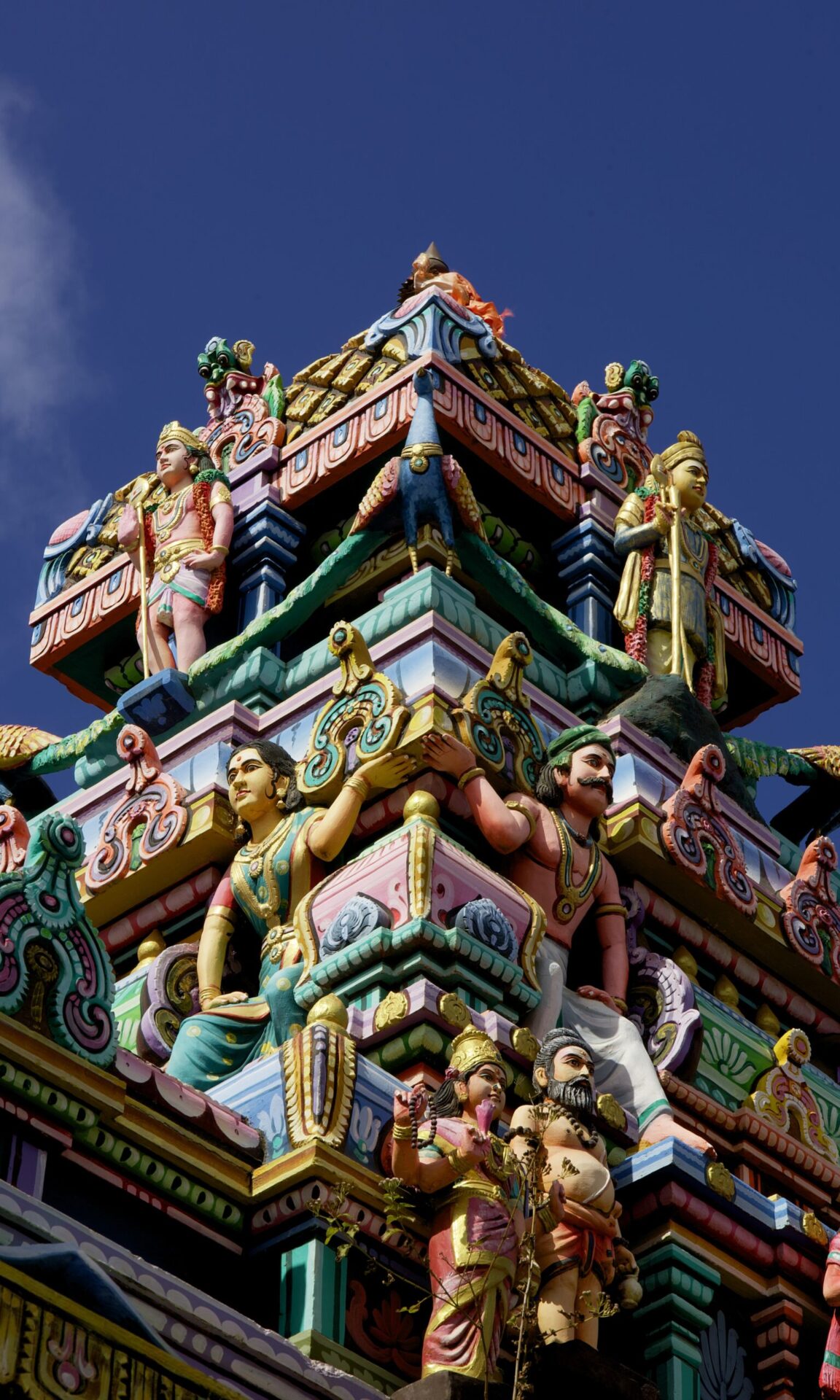
Krishna
Origin and Role
Krishna is one of the most beloved and widely worshiped deities in Hinduism. He is considered the eighth avatar of Lord Vishnu and is revered for his role in the epic Mahabharata. Krishna is known for his mischievous childhood pastimes, his enchanting flute playing, and his teachings on love, devotion, and righteousness in the Bhagavad Gita.
Appearance and Symbolism
Krishna is depicted with a dark blue complexion, symbolizing his infinite cosmic energy and divine nature. He is often shown as a young boy or a youth, with a peacock feather in his crown and a flute in his hand. The flute represents the harmony and enchantment of Krishna’s divine music, which captivates the hearts of his devotees. He is also adorned with jewelry and peacock feather accessories, representing his regal and playful nature.
Worship and Significance
Krishna is adored and worshiped by millions of devotees, who consider him as their personal deity and guide. His worship is characterized by devotional practices such as singing and dancing, offering flowers and food, and reciting his divine names and stories. Krishna is seen as a universal teacher, imparting timeless wisdom through his words and actions. Devotees seek his blessings for love, devotion, spiritual enlightenment, and guidance in their lives. Krishna’s teachings emphasize the importance of selfless service, devotion, and living a righteous life.
Rama
Origin and Role
Rama is another beloved incarnation of Lord Vishnu and is considered the ideal man (Maryada Purushottam) in Hindu mythology. He is the protagonist of the epic Ramayana, where his life and adventures are narrated. Rama is revered for his unwavering devotion to righteousness, his commitment to duty, and his compassion towards all living beings.
Appearance and Symbolism
Rama is depicted as a young prince with a light blue complexion, along with his faithful devotee and companion, Hanuman. He is often portrayed holding a bow, known as the Rama’s Bow (Rama Dhanush), which symbolizes his strength and determination to uphold righteousness. Rama is depicted with a calm and serene expression, representing his unwavering focus and inner peace.
Worship and Significance
Rama is worshipped with great devotion and enthusiasm throughout the world, particularly in India. His worship is marked by reciting his divine names (Ram Naam Japa), singing devotional hymns, and performing plays and reenactments of his life events. Devotees seek Rama’s blessings for courage, virtue, and protection from evil forces. Rama’s life serves as an inspiration for millions, teaching us the importance of righteousness, loyalty, and sacrifice for the greater good.
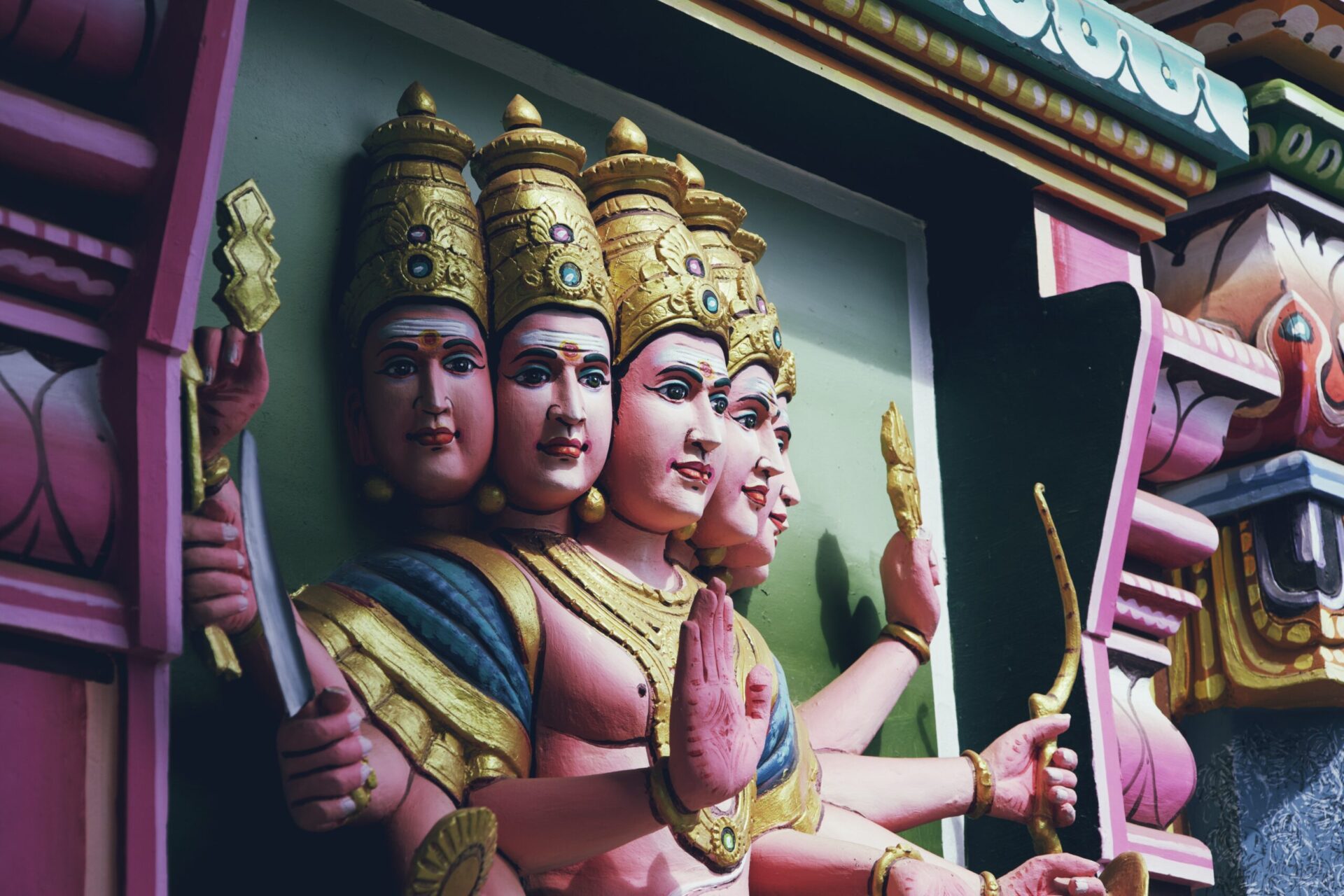
Ganesha
Origin and Role
Ganesha, also known as Ganpati or Vinayaka, is one of the most widely worshipped gods in Hinduism. He is revered as the remover of obstacles, the lord of wisdom, and the harbinger of good fortune. Ganesha is considered the son of Lord Shiva and Devi, making him one of the divine manifestations of Supreme Godhood.
Appearance and Symbolism
Ganesha is depicted with a human body and an elephant’s head, symbolizing his intellect, wisdom, and ability to overcome obstacles. He is often portrayed with a potbelly, representing his ability to digest both the good and bad experiences of life. Ganesha is shown with four arms, with each hand holding a different object. The objects may vary, but commonly include a broken tusk, a lotus flower, an axe, and a bowl of sweets. He is often depicted sitting on a lotus or a mouse, his vehicle.
Worship and Significance
Ganesha is worshipped at the beginning of any auspicious event or endeavor in Hindu culture. Devotees seek his blessings for success, prosperity, and the removal of obstacles along their life’s journey. Ganesh Chaturthi, a major festival dedicated to Ganesha, is celebrated with great enthusiasm and fervor in many parts of India. During this festival, Ganesha idols are worshipped, and processions, singing, and dancing are carried out to honor the god. Ganesha teaches us the importance of overcoming obstacles, embracing wisdom, and pursuing success with determination and humility.
Hanuman
Origin and Role
Hanuman, also known as the Monkey God, is one of the most beloved and revered gods in Hinduism. He is considered the ultimate devotee and servant of Lord Rama and is honored for his unwavering loyalty, courage, and strength. Hanuman plays a crucial role in the epic Ramayana, aiding Lord Rama in his quest to rescue his wife, Sita, from the demon king Ravana.
Appearance and Symbolism
Hanuman is often depicted as a muscular monkey-like deity, with a long tail and a face resembling that of a monkey. He is usually shown with a mace (gada) in one hand and is often portrayed in a kneeling posture, showing his deep respect and devotion to Lord Rama. Hanuman’s appearance symbolizes his strength, agility, and unwavering dedication to his divine master.
Worship and Significance
Hanuman is worshipped by millions of devotees worldwide, who seek his blessings for courage, protection, and spiritual strength. His worship is characterized by reciting Hanuman Chalisa, a devotional hymn that narrates Hanuman’s heroic deeds and praises his qualities. Hanuman is also associated with the color orange, which represents vitality, devotion, and enthusiasm. Devotees often wear orange clothing or tie an orange cloth around their wrists or necks as a mark of their devotion to Hanuman. Hanuman teaches us the importance of selfless service, loyalty, and the power of unwavering devotion.
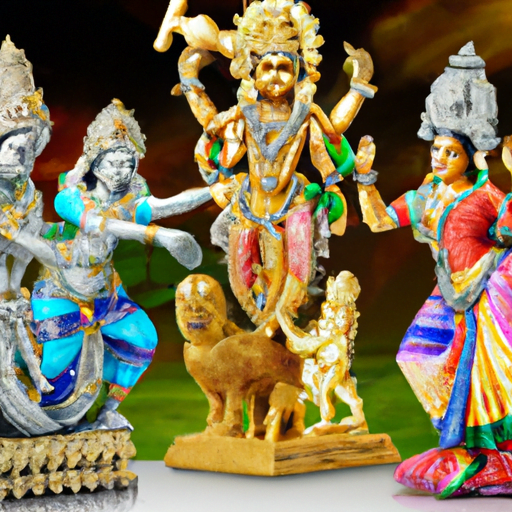
Indra
Origin and Role
Indra is one of the chief deities in Hindu mythology, known as the king of gods and lord of heavens. He is hailed as the god of rain and thunderstorms, playing a crucial role in ensuring fertility and bountiful harvests. Indra is considered a guardian and protector of the divine order, upholding righteousness and combating evil forces.
Appearance and Symbolism
Indra is usually depicted as a regal figure, adorned with divine jewelry and carrying various weapons, such as a thunderbolt (vajra) and a bow. He is often shown riding a magnificent white elephant named Airavata, symbolizing his power and authority. Indra is associated with the color white, which represents purity, and is often depicted with a radiant aura around him.
Worship and Significance
Indra’s worship was more prevalent in ancient times, but his status as a primary deity has diminished over the centuries. Nevertheless, there are still devotees who worship and revere Indra for his role as a celestial deity. His worship is mainly carried out through rituals, recitation of hymns and mantras, and offerings of prayers and modak (a sweet delicacy). Devotees seek Indra’s blessings for prosperity, abundance, and protection from natural disasters. Indra reminds us of the importance of upholding righteousness, respecting divine order, and the profound impact of natural phenomena on our lives.
Yama
Origin and Role
Yama, also known as the god of death, is a significant figure in Hindu mythology. He is considered the ruler of the underworld and the guardian of the souls of the departed. Yama’s primary role is to judge the souls of the deceased and determine their fate in the afterlife, based on their actions and karma during their earthly existence.
Appearance and Symbolism
Yama is often portrayed with a dark complexion, with a fierce expression on his face, and is depicted as a tall figure riding on a buffalo or a chariot. He holds a loop or a noose in one hand, symbolizing his ability to capture and guide the souls of the deceased. Yama is associated with the color black, representing the mysterious nature of death and the transition between life and the afterlife.
Worship and Significance
Yama is not widely worshipped as a primary deity in Hinduism, but his significance cannot be denied. His role as the god of death reminds us of the impermanence of life and the importance of living a righteous and virtuous existence. In some regions, particularly in South India, Yama is worshipped during the festival of Diwali, where special prayers and rituals are conducted to seek his blessings for protection from untimely death and to honour deceased ancestors. Yama teaches us the importance of embracing the inevitability of death and living a virtuous life, so that we can face the ultimate journey with peace and contentment.
In conclusion, Hinduism encompasses a rich pantheon of gods and goddesses, each with their own unique origins, roles, appearances, and significance. Brahma, Vishnu, Shiva, Devi, Krishna, Rama, Ganesha, Hanuman, Indra, and Yama are some of the prominent deities within Hinduism. They represent various aspects of divinity, including creation, preservation, destruction, feminine energy, devotion, righteousness, and cosmic order. These gods and goddesses are worshipped by millions of devotees worldwide, who seek their blessings for various aspects of life, such as knowledge, protection, prosperity, and spiritual growth. By understanding the origins, roles, appearances, and symbolism of these deities, devotees gain a deeper appreciation and connection to the divine, fostering a greater sense of spirituality and purpose in their lives.
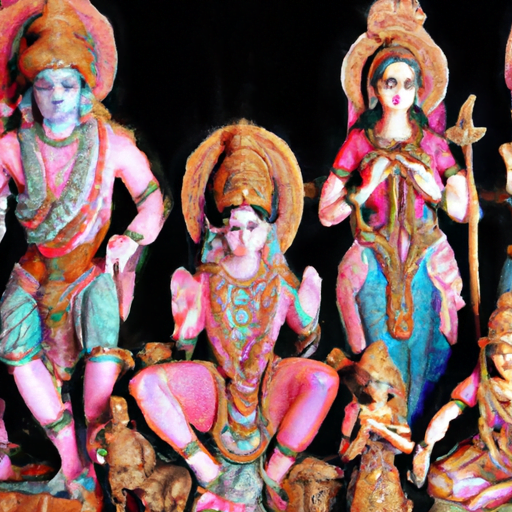
You might be interested in exploring more about Hinduism, its beliefs, and practices. Speaking of Hindu deities, you might be interested in learning more about Brahma, Vishnu, and Shiva, who are considered the top supreme gods in Hinduism. To delve deeper into their origins, roles, and significance, you can visit the Wikipedia article on Hindu deities. Furthermore, if you want to understand the stories and teachings of Krishna and Rama, two beloved incarnations of Lord Vishnu, you can check out the Wikipedia article